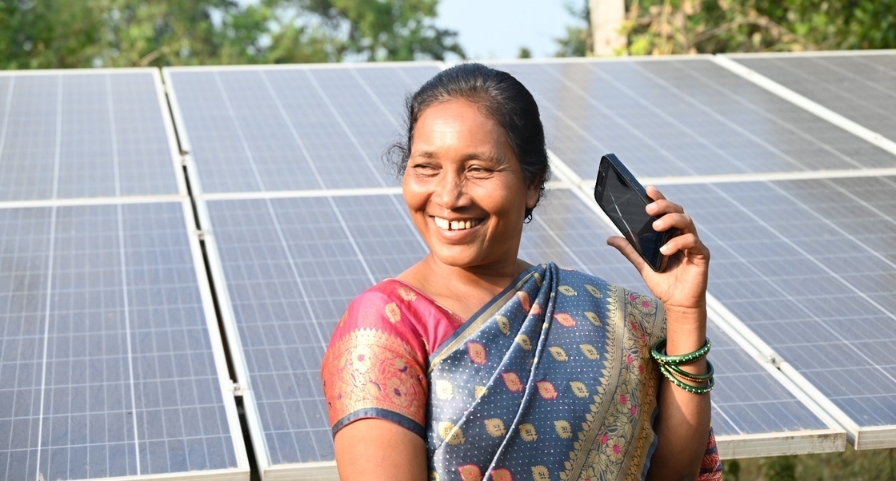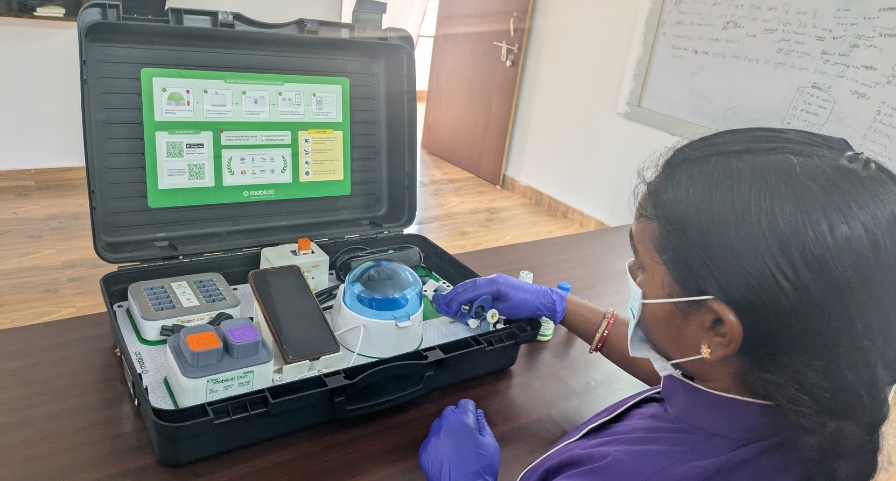In the heart of rural Jharkhand, a woman adjusts the angle of a solar panel that powers her irrigation system. Nearby, a youth logs into a digital classroom, while a frontline worker checks maternal health data on a mobile dashboard. This is where the story of technology with dignity begins – not with gadgets alone but with people working together using tech as a tool.
Across rural India, a quiet transformation is taking place. This is not led by high-speed fibre optic cables or the new gadgets alone. It is led by people using technology – not as a substitute for each other – but as an enabler of their agency.
Progress wouldn’t be possible if technology were parachuted into villages without context.

In these localities, the integration of health, agriculture, education, energy, water and governance is not a design on paper but a lived, intertwined experience of fulfilling potentials. At Transform Rural India (TRI) the arc of transformation begins with listening to people’s aspirations and dreams in our ‘Community Action Labs’. Then, together we design and cocreate solutions where technology walks with the communities – not ahead of them.
Also read: The agritech revolution in India’s farm sector
Tech tools for healthier communities
For instance, in hard-to-reach villages, women consult doctors remotely through telemedicine platforms. Community health workers and accredited social health activists (ASHAs) use mobile applications to track pregnancies, immunizations and child growth. Cervical cancer screening is aided by AI-based tools, catching risks early. Digital dashboards help local officials see where undernutrition persists, allowing for course correction.
Placed in the hands of trained workers, embraced by communities and grounded in mutual trust, these tools come alive. Here, digital technology doesn’t replace care – it deepens its reach and strengthens its human touch.
Argri-tech prowess
Just as technology deepens care in health, it is also reshaping how farming thrives in climate-vulnerable zones. In agriculture, solar-powered irrigation systems are helping small farmers to become ‘millenary’. In Jharkhand’s Bero, Kurdeg, and Kersai blocks, TRI’s solar lift irrigation initiative has revitalized thousands of acres of farmland, increased cropping intensity, and reduced input costs. Water resource mapping and satellite imaging allow communities to understand their landscapes better, regenerating water bodies and restoring degraded lands.
Cooling systems powered by green energy also help preserve farm produce. Data-driven cropping plans and access to carbon credit markets are not just innovations—they are new avenues of livelihood security and prosperity. Technology is enabling farmers, particularly women farmers to diversify income and reduce climate vulnerability.

At village level, digital platforms allow panchayats to track development indicators, prioritize schemes, and monitor delivery. With dashboards at their fingertips, local elected representatives – many of them women – lead with greater confidence. Tools are designed to enhance participation, bringing transparency and accountability. In such settings, dignity grows not from having information, but from being able to act on it collectively.
Also read: From fields to skies: Rural women soar with drone training
No longer ‘migrants-in-waiting’
Young people, long seen as migrants-in-waiting, are building futures in their own villages. Skill-building platforms, youth hubs and entrepreneurship support systems are giving rise to local enterprises – from agri-processing to digital services.
Access to finance through mobile-enabled schemes reduces barriers, while mentorship networks are reweaving social capital. These aren’t digital natives in the conventional sense – they are rural natives redefining what progress looks like on their own terms.
Women’s leadership is perhaps the most radical shift. Across sectors, women are accessing tools and training that position them as knowledge holders and decision-makers. Whether in fish farming, school management, or watershed planning, their use of technology is grounded in collective wellbeing.
None of this would be possible if technology were parachuted into villages without context. The difference lies in the approach: one that respects local knowledge, builds digital capacity gradually and sees people not as beneficiaries but as co-creators. These flourishing localities are not exceptions. They are signals of a new grammar and ‘solutions designed’ for development – where progress is measured beyond megabytes or crop yields, in restored dignity and renewed agency and ecological sustainability – to expand people’s choices and strengthen community compacts.

These stories are not imagined.
They are unfolding every day in villages where health systems are being digitized, women farmers are regenerating land with satellite data and panchayats are tracking development through open dashboards. These are places where youth and women are at the forefront, supported by technology. Such initiates exemplify the ethos of building community-powered ecosystem – flourishing localities across the bottom 100,000 villages – where technology amplifies the human spirit, and dignity is the design principle to Transform Rural India.
Also read: Manyachiwadi becomes Maharashtra’s first solar-powered village
The lead image shows digital account keeping at work. (Photo credit TRI/Ranjit Kumar Singh)








